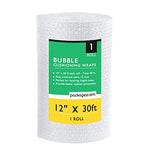You have no items in your shopping cart.
Recycling plays a crucial role in preserving our planet's resources and protecting the environment. Among the various recycling methods, full circle recycling stands out as an effective and sustainable approach. In this article, we will explore the numerous benefits of full circle recycling, highlighting its positive impact on waste management, resource conservation, energy savings, and more. By the end, you'll understand why embracing full circle recycling is a vital step towards creating a greener and more sustainable future.
Full Circle Recycling: A Holistic Approach
Full circle recycling, also known as closed-loop recycling, is a comprehensive recycling system that aims to minimize waste generation and maximize resource utilization. Unlike traditional recycling methods, full circle recycling involves the continuous conversion of discarded materials into new products, creating a closed-loop system where waste becomes a valuable resource. This approach ensures that the entire lifecycle of a product is accounted for, from its production to its eventual recycling and reuse.
The Benefits of Full Circle Recycling
Full circle recycling offers numerous benefits for the environment, society, and the economy. Let's delve into some of the key advantages:
1. Waste Reduction and Diversion
Full circle recycling significantly reduces waste that would otherwise end up in landfills or incinerators. By diverting materials from the waste stream, it minimizes the environmental impact associated with waste disposal and helps extend the lifespan of existing landfill sites. This approach also reduces the need for new landfills, mitigating potential land pollution and habitat destruction.
2. Resource Conservation and Preservation
One of the primary advantages of full circle recycling is its ability to conserve valuable resources. By reusing materials instead of extracting new ones, this approach reduces the strain on natural resources such as timber, minerals, and water. This conservation effort helps protect delicate ecosystems, preserves biodiversity, and ensures a sustainable supply of resources for future generations.
3. Energy Savings and Reduced Emissions
Full circle recycling significantly reduces energy consumption compared to producing new materials from raw resources. Manufacturing products from recycled materials requires less energy and emits fewer greenhouse gases. According to the Environmental Protection Agency (EPA), recycling aluminum saves approximately 95% of the energy required to produce new aluminum from bauxite ore. By embracing full circle recycling, we can contribute to mitigating climate change and reducing our carbon footprint.
4. Economic Benefits and Job Creation
Full circle recycling presents economic opportunities and job creation potential. Recycling industries provide employment in various sectors, including collection, sorting, processing, and manufacturing. According to a study by the Recycling Economic Information (REI), the recycling industry generates over $110 billion in economic activity annually and creates millions of jobs. By supporting full circle recycling initiatives, we can stimulate economic growth while promoting sustainable practices.
5. Environmental Protection and Pollution Reduction
By embracing full circle recycling, we actively participate in safeguarding the environment and reducing pollution. Recycling reduces the need for extracting, refining, and processing raw materials, which often leads to environmental degradation and pollution. Additionally, recycling prevents harmful substances from ending up in landfills, reducing the risk of soil and water contamination. These efforts contribute to cleaner air, water, and land, creating healthier ecosystems for all living beings.
6. Public Health Benefits
Full circle recycling positively impacts public health by minimizing exposure to harmful substances and reducing the incidence of pollution-related illnesses. By diverting waste from landfills, recycling helps prevent the release of hazardous chemicals into the environment. This reduces the risk of respiratory problems, waterborne diseases, and other health issues associated with pollution. Embracing full circle recycling improves overall public health and enhances the quality of life for communities around the world.
Frequently Asked Questions (FAQs)
1. What materials can be recycled through full circle recycling?
Full circle recycling accepts a wide range of materials, including paper, cardboard, plastic, glass, metal, and electronics. These materials go through a process of collection, sorting, and reprocessing to create new products or materials.
2. How does full circle recycling differ from traditional recycling?
While traditional recycling focuses on converting waste into new products, full circle recycling takes it a step further. It ensures that the recycled materials are continuously looped back into the manufacturing process, creating a closed-loop system where waste becomes a valuable resource.
3. Does full circle recycling have any limitations?
Full circle recycling does have certain limitations. Some materials may be challenging to recycle due to contamination, complexity, or lack of recycling infrastructure. Additionally, the quality of recycled materials may not always match that of virgin materials, affecting certain industries that require specific material properties.
4. How can individuals contribute to full circle recycling?
Individuals can contribute to full circle recycling by properly sorting their recyclables, using designated recycling bins, and supporting local recycling programs. Additionally, buying products made from recycled materials and advocating for recycling initiatives can further support the adoption of full circle recycling.
5. What are some successful examples of full circle recycling?
Numerous successful examples of full circle recycling exist. For instance, the recycling of aluminum cans, where the same aluminum can be recycled repeatedly without losing its quality. Similarly, some clothing brands utilize recycled materials like plastic bottles and old garments to create new clothing items, closing the loop in the fashion industry.
6. How does full circle recycling benefit future generations?
Full circle recycling plays a crucial role in ensuring a sustainable future for generations to come. By conserving resources, reducing waste, and mitigating pollution, it creates a healthier and more sustainable environment for future inhabitants. Embracing full circle recycling today is an investment in the well-being of future generations.
Conclusion
Full circle recycling is a transformative approach that offers numerous benefits for the environment, society, and the economy. From waste reduction and resource conservation to energy savings and pollution reduction, its positive impact is far-reaching. By embracing full circle recycling, we can contribute to a more sustainable future, protect our planet's resources, and preserve the beauty of our natural environment. Let us join hands and take the necessary steps towards a greener and more sustainable world.








